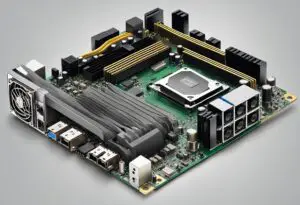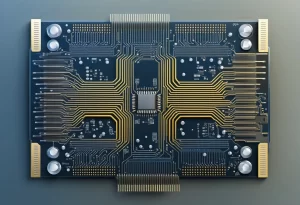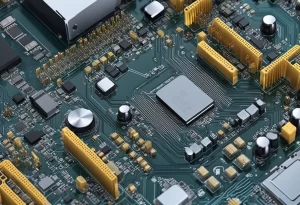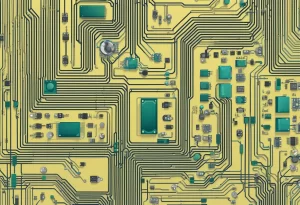How To Increase Processor Speed Ghz – Boost Your Computer’s Performance
Supercharge Your System: Effective Ways To Enhance Processor Speed (GHz)

Increase Processor Speed Ghz is a 5 common way to boost the performance of a computer. Faster processor speed means faster execution of commands and better overall system performance. There are several factors that affect processor speed, and understanding these factors is key to increasing processor speed.
One of the most important factors affecting processor speed is clock speed, measured in GHz. The higher the clock speed, the faster the processor can execute instructions. However, increasing clock speed is not always the best way to increase processor speed, as other factors like cache size, bus speed, and number of cores also play a role.
Basic steps to increase processor speed include adjusting power settings, updating drivers and software, and cleaning the computer to remove dust and debris. Advanced techniques like overclocking and upgrading hardware components can also be used to boost processor speed, but these methods require more technical expertise and carry potential risks.
Key Takeaways
- Processor speed is measured in GHz and clock speed is a key factor affecting processor speed.
- Basic steps like adjusting power settings and updating drivers can help increase processor speed.
- Advanced techniques like overclocking and hardware upgrades carry potential risks and require more technical expertise.
Understanding Processor Speed

The speed of a processor is one of the most important factors that determine the performance of a computer. It refers to the number of calculations that a processor can perform in a second, which is measured in gigahertz (GHz).
The processor speed is determined by the clock rate, which is the number of clock cycles that the processor can execute per second. The clock rate is determined by the crystal oscillator that generates a constant signal for the processor to follow. The more clock cycles that a processor can execute per second, the higher the clock rate, and the faster the processor speed.
It’s important to note that processor speed is not the only factor that determines the performance of a computer. Other factors, such as the number of cores, cache size, and memory bandwidth, also play a significant role in determining the overall performance of a computer.
In general, a higher processor speed means that the computer can perform more calculations in a shorter amount of time, which translates to faster performance. However, it’s important to note that the actual performance gain from a higher processor speed depends on the specific task being performed. Some tasks, such as gaming and video editing, can benefit significantly from a higher processor speed, while others, such as web browsing and word processing, may not see as much of a performance gain.
Overall, understanding the processor speed is an important factor in choosing a computer and optimizing its performance.

Credit: Amazon
Factors Affecting Processor Speed
Hardware Limitations
The speed of a processor is primarily influenced by its clock speed, determined by the base clock frequency (measured in GHz) and core multipliers. Overclocking can increase speed but carries risks of hardware damage. The number of cores also impacts performance; more cores allow for multitasking, though not all applications utilize them effectively. Additionally, the cache size, which stores frequently accessed data, plays a critical role in enhancing processor performance, as a larger cache can reduce reliance on slower main memory.
Software Limitations
The software running on the processor can also affect its speed. The operating system, drivers, and applications all have an impact on the processor’s performance. An outdated or poorly optimized operating system can slow down the processor, while updated drivers can improve its performance.
Applications that are not optimized for the processor’s architecture can also affect its speed. For example, a 32-bit application may not be able to take advantage of a 64-bit processor’s full capabilities. Similarly, applications that are not optimized to use multiple cores effectively may not see much improvement in performance on a processor with more cores.
In conclusion, the processor’s hardware and software both play important roles in determining its speed. Upgrading the processor’s hardware and optimizing the software can both improve its performance. However, it is important to keep in mind that there may be limitations to how much the processor’s speed can be increased.
Basic Steps to Increase Processor Speed

Increasing processor speed can improve the performance of a computer. Here are some basic steps to increase processor speed:
Upgrading Hardware
Upgrading hardware is one of the most effective ways to increase processor speed. Here are some hardware upgrades that can help:
- Upgrade the CPU: Upgrading the CPU is the most effective way to increase processor speed. However, it can be expensive and may require a new motherboard.
- Add more RAM: Adding more RAM can improve the performance of a computer by reducing the amount of data that needs to be read from the hard drive.
- Upgrade the hard drive: Upgrading to a solid-state drive (SSD) can improve the performance of a computer by reducing the amount of time it takes to read and write data.
Optimizing Software
Optimizing software can also improve the performance of a computer. Here are some software optimizations that can help:
- Remove unnecessary programs: Removing unnecessary programs can free up system resources and improve the performance of a computer.
- Update drivers: Updating drivers can improve the performance of a computer by fixing bugs and improving compatibility.
- Use performance optimization software: Performance optimization software can help improve the performance of a computer by optimizing the system settings and removing unnecessary files.
By following these basic steps, users can increase the processor speed of their computer and improve its overall performance.
Advanced Techniques to Boost Processor Speed

Overclocking
One of the most popular methods to increase processor speed is through overclocking. Overclocking is the process of increasing the clock speed of a processor beyond its rated speed. This is achieved by increasing the CPU multiplier or the front-side bus (FSB) frequency. Overclocking can be done through the BIOS settings of the motherboard or by using third-party software.
However, overclocking can also cause damage to the processor and other components of the computer if not done properly. Overclocking can cause overheating, instability, and even permanent damage to the processor. Therefore, it is important to take proper precautions and follow a guide or tutorial when overclocking a processor.
Using Processor-Intensive Applications
Another way to boost processor speed is by using processor-intensive applications. These applications are designed to utilize the full potential of the processor and can help increase its speed. Some examples of processor-intensive applications include video editing software, 3D modeling software, and gaming applications.
By using these applications, the processor is forced to work harder and faster, which can help increase its speed. However, it is important to note that running processor-intensive applications for extended periods of time can also cause overheating and damage to the processor. Therefore, it is important to monitor the temperature of the processor and take proper precautions to prevent damage.
In conclusion, overclocking and using processor-intensive applications are two advanced techniques that can help boost processor speed. However, it is important to take proper precautions and follow a guide or tutorial when using these techniques to prevent damage to the processor and other components of the computer.
Potential Risks and Precautions
Hardware Damage
Overclocking a CPU, if not done properly, can cause hardware damage. When overclocking, the CPU generates more heat than it would at its stock settings. This increased heat can damage the CPU and other components of the computer.
To prevent hardware damage, it is important to monitor the temperature of the CPU and other components while overclocking. Overclocking software can be used to monitor the temperature of the CPU, motherboard, and other components. It is recommended to keep the CPU temperature below 80°C during overclocking.
System Instability
Overclocking can also cause system instability. When overclocking, the CPU runs at a higher clock speed than it was designed for. This can cause errors and crashes in the operating system and applications.
To prevent system instability, it is important to stress test the system after overclocking. Stress testing software can be used to test the stability of the CPU and other components. It is recommended to stress test the system for at least an hour to ensure stability.
It is also recommended to back up important files before overclocking. In case of system instability or hardware damage, a backup can help prevent data loss.
Overall, overclocking a CPU can increase its performance, but it comes with potential risks. To prevent hardware damage and system instability, it is important to monitor the temperature of the CPU and other components, stress test the system after overclocking, and back up important files.
FAQs Of How To Increase Processor Speed Ghz?
What are the best CPU overclocking software?
There are several CPU overclocking software available in the market. Some of the popular ones are:
- MSI Afterburner
- Intel Extreme Tuning Utility
- AMD Ryzen Master
- EVGA Precision X1
- ASUS GPU Tweak II
How can I overclock my CPU?
Overclocking a CPU involves increasing its clock speed to improve its performance. The process can be done in the BIOS or through third-party software. However, it is important to note that overclocking can cause damage to the CPU if not done properly. It is recommended to follow a guide or tutorial before attempting to overclock the CPU.
How to increase processor speed in HP laptop?
To increase processor speed in an HP laptop, you can try the following steps:
- Uninstall unnecessary programs and applications
- Disable startup programs
- Increase RAM
- Clean up the hard drive
- Update drivers and BIOS
- Overclock the CPU (if possible)
How to increase CPU speed in Windows 11?
To increase CPU speed in Windows 11, you can try the following steps:
- Adjust power settings
- Disable unnecessary services and programs
- Update drivers and BIOS
- Overclock the CPU (if possible)
- Use a cooling pad
How to overclock CPU Intel?
To overclock an Intel CPU, you can try the following steps:
- Enter the BIOS and find the CPU frequency settings
- Increase the CPU frequency in small increments
- Stress test the CPU to ensure stability
- Repeat the process until the desired clock speed is achieved
How to increase processor speed in laptop?
To increase processor speed in a laptop, you can try the following steps:
- Uninstall unnecessary programs and applications
- Disable startup programs
- Increase RAM
- Clean up the hard drive
- Update drivers and BIOS
- Overclock the CPU (if possible)
Conclusion
Increasing processor speed can be a great way to improve the performance of your computer. There are several ways to do this, including overclocking, adjusting power settings, and upgrading hardware.
Overclocking can be a great way to get more performance out of your processor, but it does come with some risks. It is important to do your research and make sure you understand the process before attempting it.
Adjusting power settings can also be a great way to increase processor speed. By making sure your computer is set to high performance mode, you can ensure that your processor is running at its maximum speed.
Upgrading hardware can be the most effective way to increase processor speed. By upgrading to a newer, faster processor, you can get a significant boost in performance.
Overall, increasing processor speed can be a great way to improve the performance of your computer. Whether you choose to overclock, adjust power settings, or upgrade hardware, there are several ways to get more performance out of your processor.

I am a technology Specialized writer and blogger based in the USA & UK. I have four years of experience in Cyber Security, Technology, Social Media and all types of electronic devices like computer laptops etc. So I work on solving these issues and give various tips on these issues



